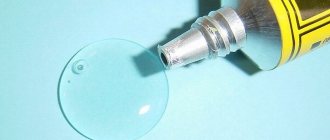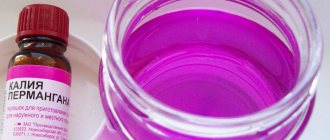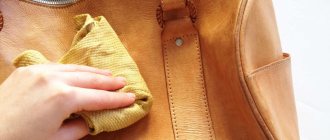In the twentieth century, a “by-product” of the experiments of the American chemist Harry Coover, who worked on the creation of transparent plastic for optical sights, was a certain substance with a unique ability to firmly connect various materials. This is how superglue was born.
The action of any superglue is ensured by the cyanoacrylate it contains. This component, when interacting with air, quickly hardens, firmly connecting the surfaces. This is why it is so difficult to remove Moment glue from clothes or remove stains from other materials. However, the problem can be solved.
How to remove Moment glue from your hands: 5 delicate ways
However, not everyone is so prudent as to stock up on anti-glue in advance. Folk remedies will come to the aid of the “victims”. You can remove superglue from your hands using five delicate compounds that do not injure the skin.
Soap solution
Peculiarities. Warm water and any detergent (coarsely grated laundry soap, liquid soap or dishwashing liquid) are used as active ingredients.
How to act
- Fill a suitable size container (basin or deep bowl) with warm water.
- Add detergent (a very strong soap solution is needed).
- Soak your hands in the mixture for ten minutes or more. As the solution cools, you need to add warm water from a pre-prepared kettle standing nearby.
- Use a soft sponge to wipe the stained areas. You can use a pumice stone, but you should rub it carefully so as not to injure the skin.
- Wash your hands with running water.
- Repeat if necessary.
To enhance the effect, after the bath you need to treat your hands with margarine, Vaseline or glycerin - this will make the glue rub off easier.
Vinegar and vegetable oil
Peculiarities. Acetic acid and fats contained in the oil destroy the structure of cyanoacrylate, making it easier to wash the product off the skin.
How to act
- Prepare a warm vinegar solution and pour it into a basin or bowl.
- Immerse your hands in the composition.
- Wait ten minutes.
- Soak a cotton pad in vegetable oil and begin wiping your hands off the glue.
- Wash off any remaining product with warm water and soap.
Nail polish remover
Peculiarities. You will need nail polish remover containing acetone.
How to act
- Apply nail polish remover to the dried glue using a cotton pad.
- Wait five to ten minutes.
- Wash your hands under warm running water for 15-20 minutes, alternately treating the skin with soap and a rich cream or lotion.
Baking soda
Peculiarities. Instead of soda, you can use table salt. In this way you can remove clothes.
How to act
- Pour enough water into the baking soda to form a mass that resembles a paste in consistency.
- Apply the composition to the dried glue.
- After five to ten minutes, remove the residue with running water.
Ammonia
Peculiarities. Removing glue with ammonia is not recommended for excessively dry and sensitive skin. Work with ammonia in a well-ventilated area.
How to act
- Using a cotton pad, wipe the contaminated areas with ammonia.
- Wait five to seven minutes.
- Wash your hands with running warm water.
There is no need to remove the glue from your hands: along with dead skin particles, it will come off on its own after two to three days. True, it will be very difficult to do everyday things because of your fingers sticking to everything.
Furniture care
Furniture should be regularly wiped from dust and protective agents should be applied. They will not allow the glue to penetrate deeply into the pores in case of negligence. Put covers on upholstered furniture that are easy to remove and wash, and in more severe cases, replace with new ones.
Mandatory condition: cover the table with newspaper or paper when working with adhesives. If you are repairing furniture with their help, use a brush that can be used to precisely apply the composition and not stain the surrounding surface.
Pollution is always easier to prevent than to remove.
Use the above cleaning methods if necessary, but try to keep such hassles to a minimum.
Safety precautions when cleansing the skin
When removing glue from your hands, you need to:
- monitor the skin reaction - in case of undesirable manifestations (severe redness, irritation), stop manipulation immediately;
- do not use sandpaper or gasoline - it is important to painlessly and carefully remove superglue from the skin;
- take care of your hands - after any procedure aimed at removing glue, lubricate the skin with a nourishing and/or moisturizing cream.
You can prepare your own restorative hand mask. Crush warm boiled potatoes and mix with heated milk to obtain the consistency of thick sour cream. Apply the mixture to your fingers and put on cotton gloves. After 15-20 minutes, wash your hands with running water and apply nourishing cream.
How to remove super glue from furniture
Superglue hardens quickly and is not easy to remove.
First of all, it is important to prevent such compounds from getting on furniture. If there is a need to glue a damaged decorative part, this must be done with caution. When working with glue, it is better to cover the surface of a table or other interior item with paper so that drops do not fall on them.
The glue is based on cyanoacrylate, which dries very quickly and is difficult to remove. Your task is to dissolve or soften it as much as possible.
To remove glue you may find it useful:
- scotch;
- rags and napkins;
- blade, knife or scraper;
- toothbrush and fine-grained sandpaper;
- hair dryer;
- soap or vegetable oil;
- toothpaste;
- acetone, dimexide, gasoline, white spirit;
- alcohol and vinegar.
Start removing with milder products and only if necessary, move on to strong solvents.
Suitable solvents for other surfaces
Having decided to remove the glue stain, you need to:
- start cleaning as soon as possible - the more the glue dries, the more difficult it is to save your favorite thing;
- check the effect of the product on an inconspicuous area - the aggressive composition can not only dissolve the glue, but also damage the surface, as well as discolor the painted material;
- Observe safety precautions - it is recommended to clean off the glue with rubber gloves in a well-ventilated area.
Video on the topic
Products that superglue is “afraid of”
Products that destroy cyanoacrylate will help remove superglue from fabric, shoes, furniture and other surfaces:
- acetone (or nail polish remover);
- vinegar solution (a tablespoon per glass of water);
- lemon juice;
- "Dimexide";
- ammonia;
- false eyelash remover.
"Dimexide" is a medicine prescribed for the treatment of joints. The drug easily penetrates the body through the skin, so when using it, be sure to wear rubber gloves.
Clothing and fabric
- Place the product on a sheet of thick cardboard.
- Soak a cotton pad in the chosen product.
- Treat dried glue.
- Wait 30-60 minutes.
- Using a brush or sponge, scrub off the stain.
- Rinse the product in clean water.
There is no need to try to remove dried Moment glue from clothes if the item is made of delicate fabric: it is better to immediately take the item to dry cleaning.
Leather shoes and bags
- After moistening a cotton pad with solvent, wipe the stain.
- Wait 15-20 minutes.
- Remove easily coming off adhesive with a damp cloth.
- Wipe the treated area dry.
To clean glue from shoes and other leather products without scratches, you need to wipe off the stain with a soft sponge or cotton pad.
Suede products
- Hold the product over boiling water for several minutes (or use a steam generator).
- Soak a cotton pad with the chosen product and wipe the stain.
- Remove residues with a clean damp cloth.
- Apply suede impregnation to the treated area and lift the pile with a special brush.
Floor and cabinet furniture
- Moisten a cotton pad with solvent.
- Treat the contaminated area and wait 15 minutes.
- Pick up the adhesive stain from the edge with a wooden or silicone spatula and remove. If the surface is scratch-resistant, you can use sandpaper to scrape off the stain faster.
- Wipe the treated area with a clean cloth.
You can remove superglue from furniture and floors with gasoline or a solvent such as white spirit. In this case, you need to open all the windows and send the children for a walk. Gasoline does an excellent job of removing traces of a glue gun.
Upholstery of upholstered furniture
- Soak a napkin with your chosen product.
- Apply to the stain for 20-30 minutes.
- Wipe the treated area with a clean damp cloth.
Sometimes a mechanical method helps to quickly remove dried instant glue from upholstered furniture: you can “beat” the stain using a rolling pin or a wooden masher.
Features of removing fresh stains
Fresh stains are the easiest to remove without harming the table surface. Even gentle cleansers are suitable for this.
First, it is recommended to try a solution based on laundry soap (just use hot water). You can clean the mark using an old toothbrush, the hard side of a sponge, or a medium-hard brush.
Also, fresh stains can be easily removed with washing powder. A thick paste is made from it, which subsequently acts as an abrasive component. But these options only help if the glue has not yet dried.
Learn how to remove stickers from your refrigerator at home.
Hot and cold processing methods
Cyanoacrylate is destroyed under the influence of high and low temperatures, so in some cases an iron, hair dryer and freezer will help remove the glue.
Freezer
Peculiarities. Cold helps remove superglue from clothes and shoes. This method can be used if there are traces of fallen rhinestones on your T-shirt, or if chewing gum is stuck to your jeans.
How to act
- Place the stained item in a plastic bag and tie the bag tightly.
- Place in the freezer for several hours - the adhesive film will become fragile and can be easily peeled off.
Hairdryer
Peculiarities. The hot air produced by the hairdryer will help remove glue from clothes, shoes and surfaces that are not afraid of high temperatures.
How to act
- Direct a stream of hot air at the contamination, subjecting it to heat for several minutes.
- Remove curdled glue with a damp cloth.
- Wipe the treated area dry.
Using a hairdryer you can remove Moment glue from upholstery. But for MDF covered with PVC film, this method is not suitable.
Iron
Peculiarities. You can use an iron to remove superglue from clothes without water. Judging by the reviews, this method is one of the most effective for removing glue from fabric.
How to act
- Spread a cotton cloth on the ironing board and place the product with the adhesive stain.
- Cover the top with another piece of cotton fabric.
- Iron the area with the stain on both sides with a hot iron.
- Repeat if necessary.
What not to do?
To keep the table surface safe and sound, you need to act quickly and carefully with super glue. If glue ends up on the table, under no circumstances should it be smeared over the surface: it will be even more difficult to peel off a thin layer from the table.
Also, cleaning company specialists do not recommend using a knife or other sharp object: all traces of glue are unlikely to be removed in this way, but scratches will definitely remain on the table.
Do not use strong chemicals on surfaces on which food will subsequently be prepared.
REFERENCE! To reduce the mechanical impact on the surface, it is recommended to pre-soak it.
Have you ever scrubbed super glue off a table?
Not really
Neutralization with alcohol
Add a teaspoon of solvent to a tablespoon of toothpaste and stir thoroughly;
- Apply the prepared mixture to the stain and leave for 15 minutes.
- Using a soft toothbrush, we try to wipe away traces of glue; to do this, rub the dried mixture in a circular motion.
- Use a plastic spatula to remove any remaining dirt, then wipe the surface with warm soapy water.
Acetone is often used to remove glue from the surface of a plastic table. The surface cleaning process is as follows:
- the solution is applied to a piece of cotton wool and rubbed over the area where the adhesive “plaque” has formed (when removed with acetone, the stain should dry completely);
- the product makes the stain soft and its adhesion to the damaged part of the countertop is reduced;
- then take a cloth and wipe the damaged area.
Everything has been removed, but the smell and traces of acetone remain. To remove them, use soap diluted in water. The solution is applied to an old toothbrush and the acetone remaining on the surface of the plastic is removed.
Also, super glue is removed from the table surface using varnish. The principle of operation is the same as when removing with acetone, except that the varnish must be applied to the area to be wiped several times to soften the glue.
Super glue can still be removed from glass and plastic tables using an alcohol solution purchased at a pharmacy. The process of removing dried stains using this method consists of the following steps:
- Apply alcohol to the place where the stain has formed;
- now you need to wait five minutes;
- wipe the solution with a clean, soft cloth;
- The wiped area is treated with warm liquid.
Although plastic may lose its color when treated with acetone, this is not as noticeable as if it is poured onto a wood surface.
If a lot of super glue has been spilled on the surface of a wooden table and cannot be removed by other methods, and there is not enough money to buy expensive household chemicals, there is a completely professional method - removing glue from wood by applying varnish.
To remove super glue from the surface of a wooden table in this way, you must perform the following steps:
- take sandpaper and carefully clean the damaged area;
- It is best to seal the area around with tape;
- if scratches occur, the area should be moistened with water;
- when the liquid dries, treat with fine-grained sandpaper;
- then the surface is primed with wax for the final removal of small cracks and better adhesion of the part of the object being repaired to the varnish;
- after complete drying, the whole thing is sanded again with fine “sandpaper” and wiped with a rag;
- then take a brush with a bristle attachment and apply the varnish in several layers with smooth movements;
- You must first select a dye of a similar color.











